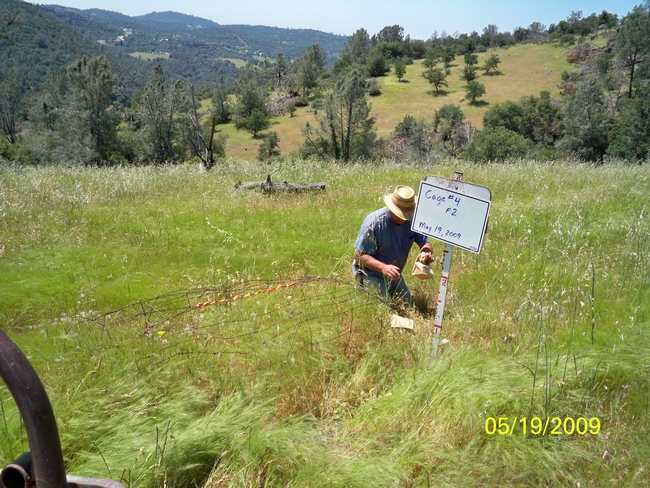
Rangeland specialist Jim Clawson first initiated the forage production data collection at UC SFREC in 1979. Past Director Mike Connor expanded the process with monthly (rather than seasonal) sampling of the usable forage in a particular area. Three plots were originally set aside to sample, but following multiple trials one specific plot was chosen. The same 1-acre grazed plot has been used for the past 35 years, as it is located at a median elevation with moderate canopy cover and a fairly representative soil of the entire ranch. 
This year's forage production data was rather interesting. Late fall rains followed by freezing temperatures during germination, coupled with the severe winter drought, created dismal forage growth at the beginning of the yearly cycle (typically starting in December). However, the heavy rainfall experienced at the end of January and in the following months proved sufficient enough to produce nearly 80% of average forage production. As the person who has taken responsibility for keeping track of the forage production measurements and compilation, UC SFREC Superintendent Dustin Flavell has noticed an interesting trend; the total amount of precipitation is not always strictly correlated with the total pounds of forage produced per acre. “The right amount [of rainfall] at the right time and frequency will result in the most growth,” said Flavell.
Producers may find it useful to monitor forage production and peak standing crop on their own ranches. While there are varying definitions of peak standing crop, at UC SFREC it is measured when a majority of the grasses begin to cure but do not reach full maturity (seeds ready for dispersal). Peak standing crop typically occurs early to mid May. Several publications are available from the research conducted on forage production and residual dry matter that go into more depth about the importance of monitoring grass growth. One particular publication offers a simple 6-step method for determining forage in pounds per acre.
With a new growing season just around the corner, be on the lookout for additional posts regarding forage production at UC SFREC.
Here are some additional links for more information about this topic:
http://californiarangeland.ucdavis.edu/Monitoring_Annual_Rangeland_Forage_Production/
//ucanr.edu/blogs/blogcore/postdetail.cfm?postnum=14157
http://sfrec.ucanr.edu/Data/forage/
Attached Files: